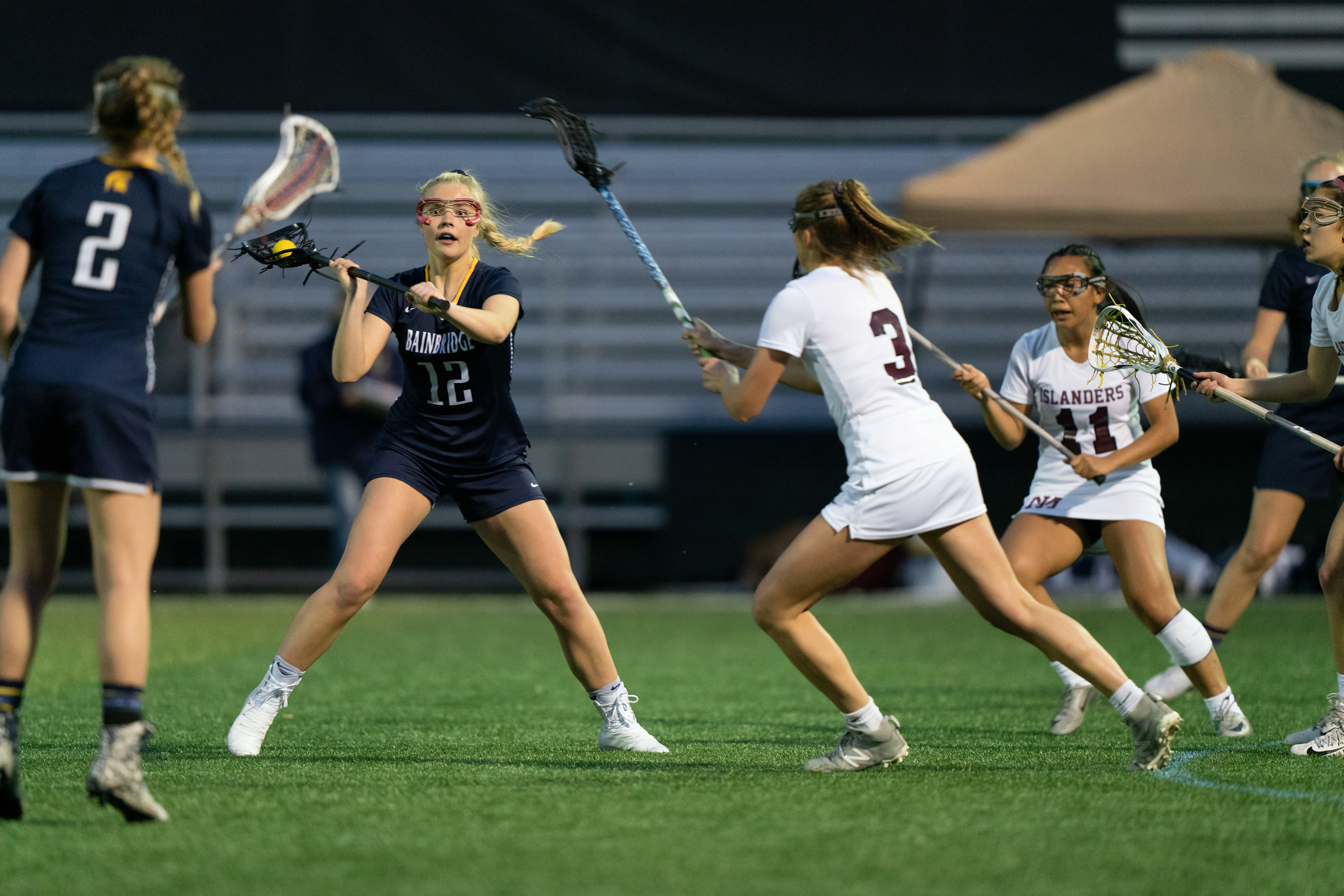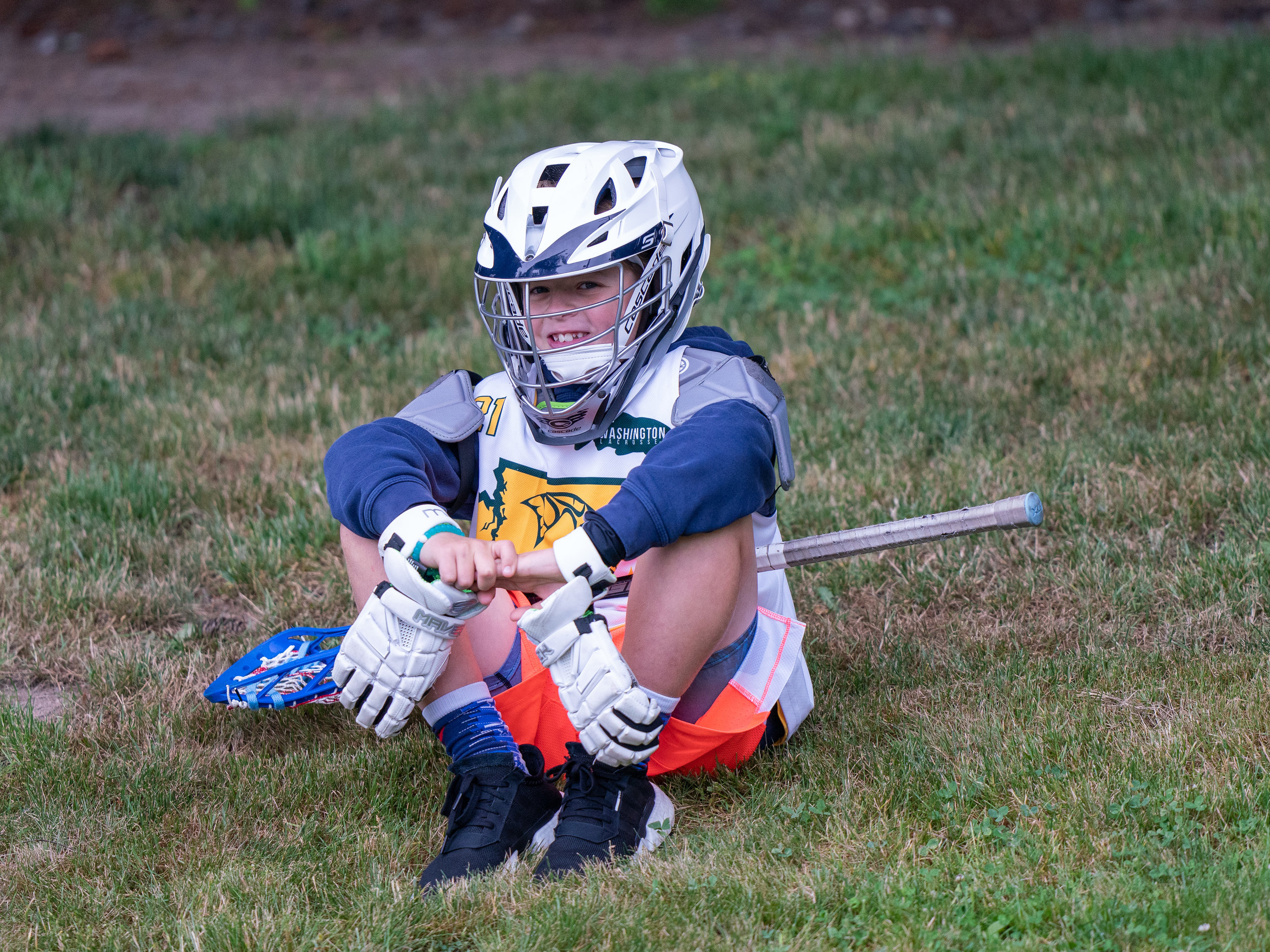Shooting Low with the Sony 400
Can I see the players’ faces and eyes? Is there a presentable background? That’s what I ask myself as I move up and down the sports field, following the action while also looking for a good shot. Getting in position is not just about following the action; it’s about following what’s behind the action. And it’s about the angle of view.
Eyes, background, eyes, background. Now if only I could photoshop #14 out of the picture…
Shooting Low
I like to shoot field sports from a low angle with the camera tilted upwards towards the action - for a number of reasons. Aesthetically, I like the angle. It seems to give a more personal ‘feel’ to the photograph. Shooting low also gives me a better chance of catching a bit of crowd in the background, which is always nice. Backgrounds are important: a bank of honey buckets in the background can ruin an otherwise beautiful action picture! And finally, for sports where the players wear helmets, shooting low gives you a better chance of seeing the faces and eyes of the players, particularly under harsh stadium lights.
Low-to-high angle helps capture the crowd in the background, and get faces - even with helmets. OMG did the ball go IN?
Small and Light is good, up to a point…
I am used to prancing around the field with a super-light Nikon 300mm f/4 lens which makes it easy to get low for a few shots then stand up again to move up and down the field. I use this lens even though I have switched to Sony, because it is such a delightfully sharp, light prime telephoto. (For more on what this lens can do, check out this gallery.)
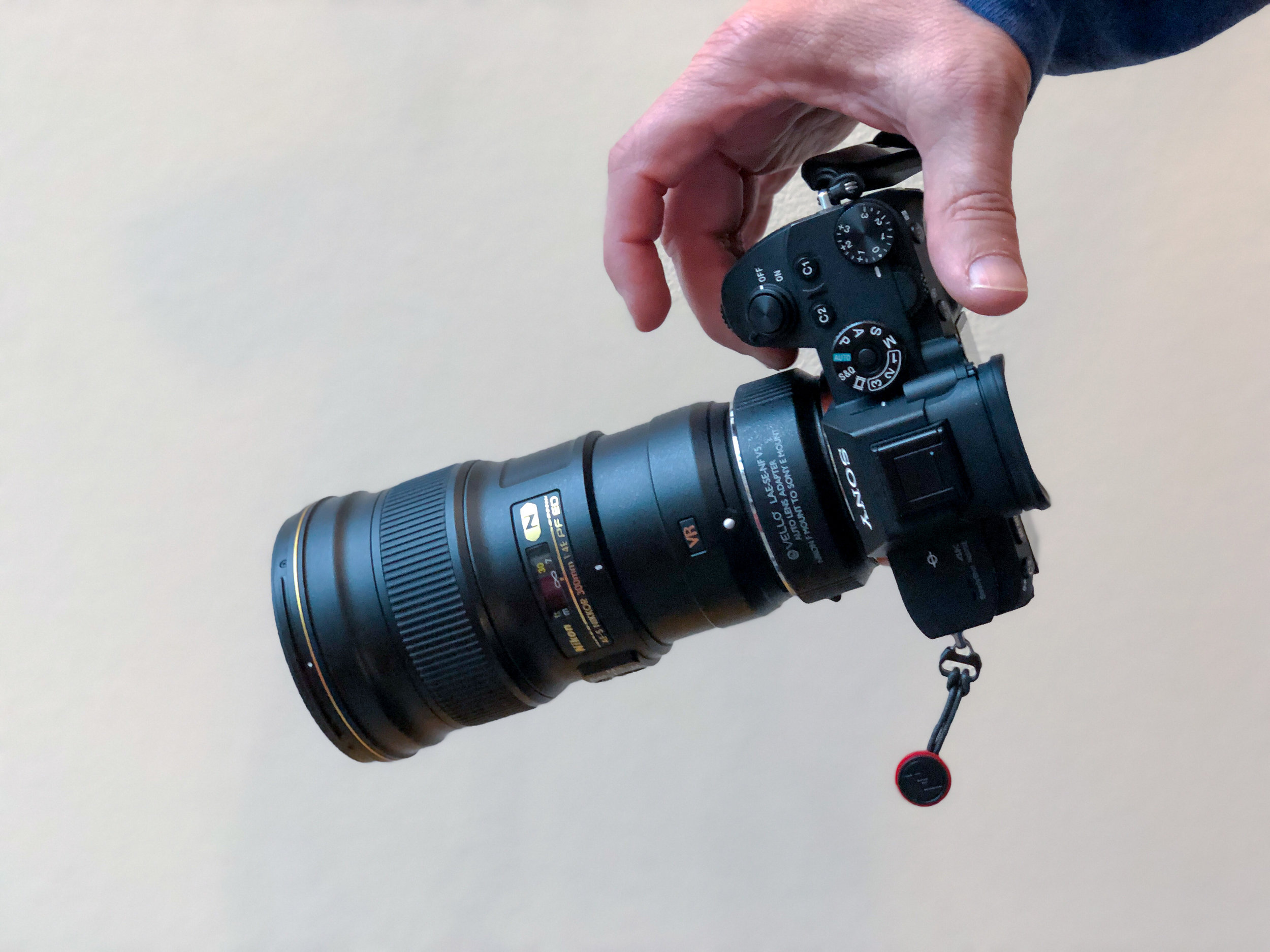
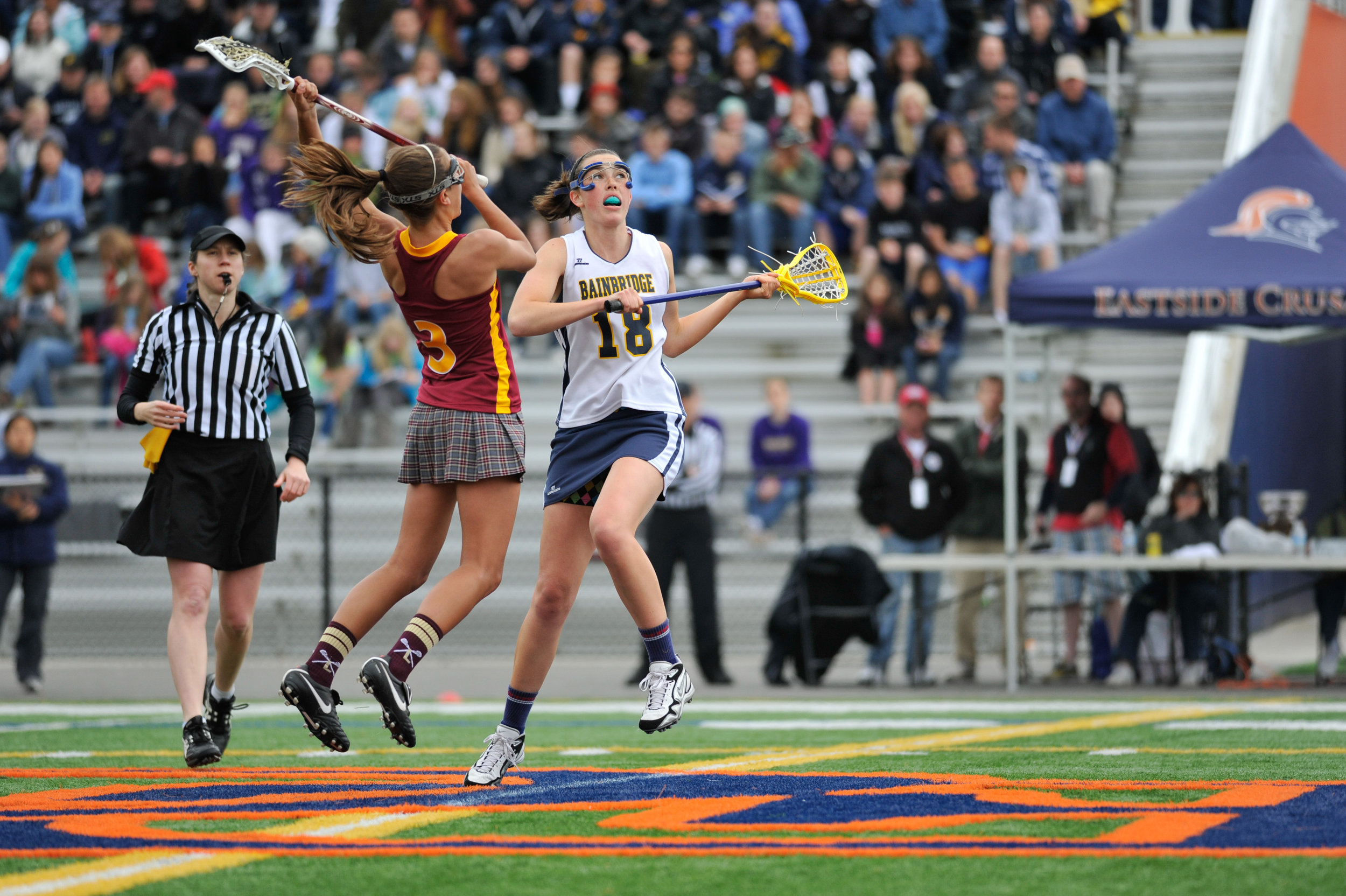
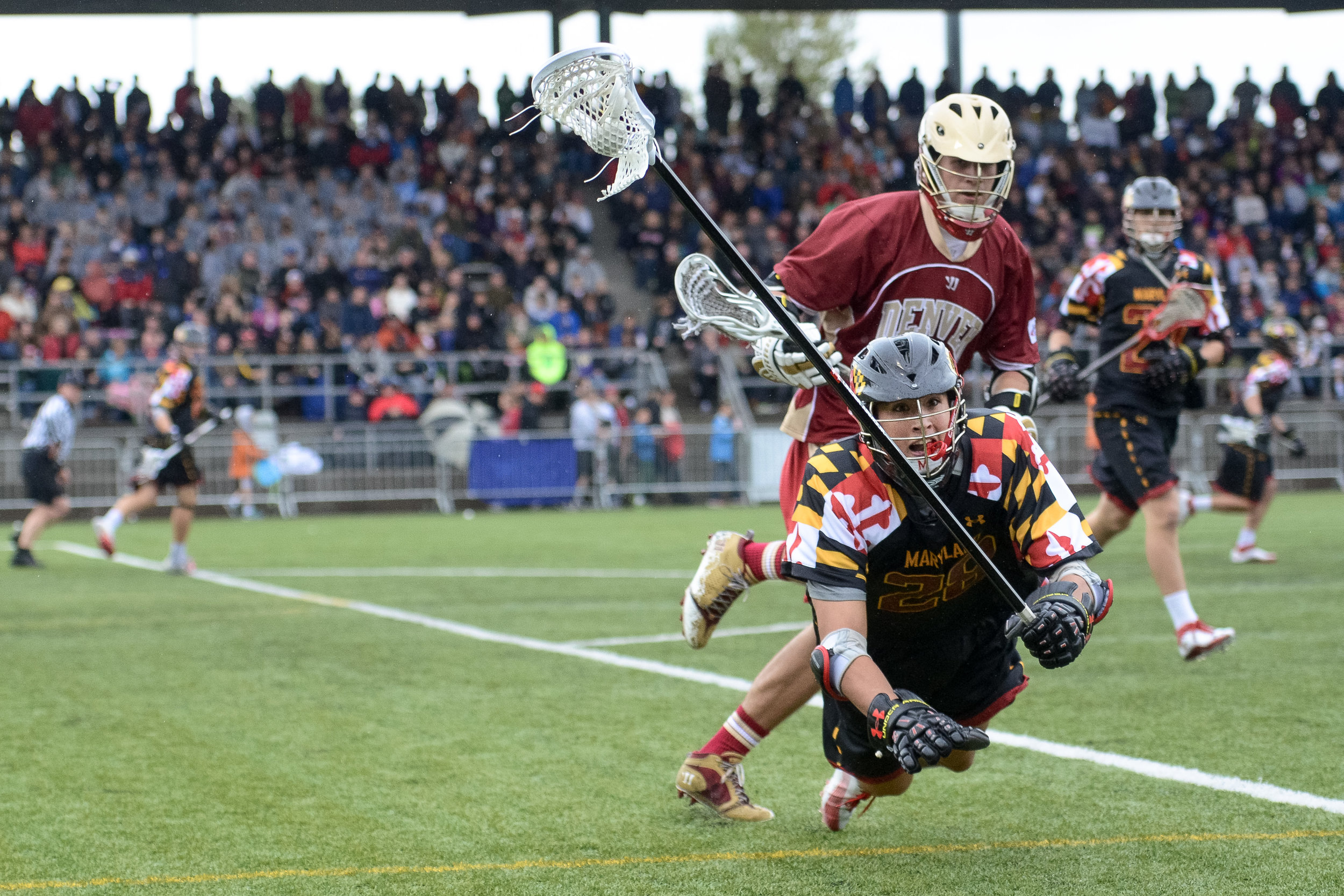
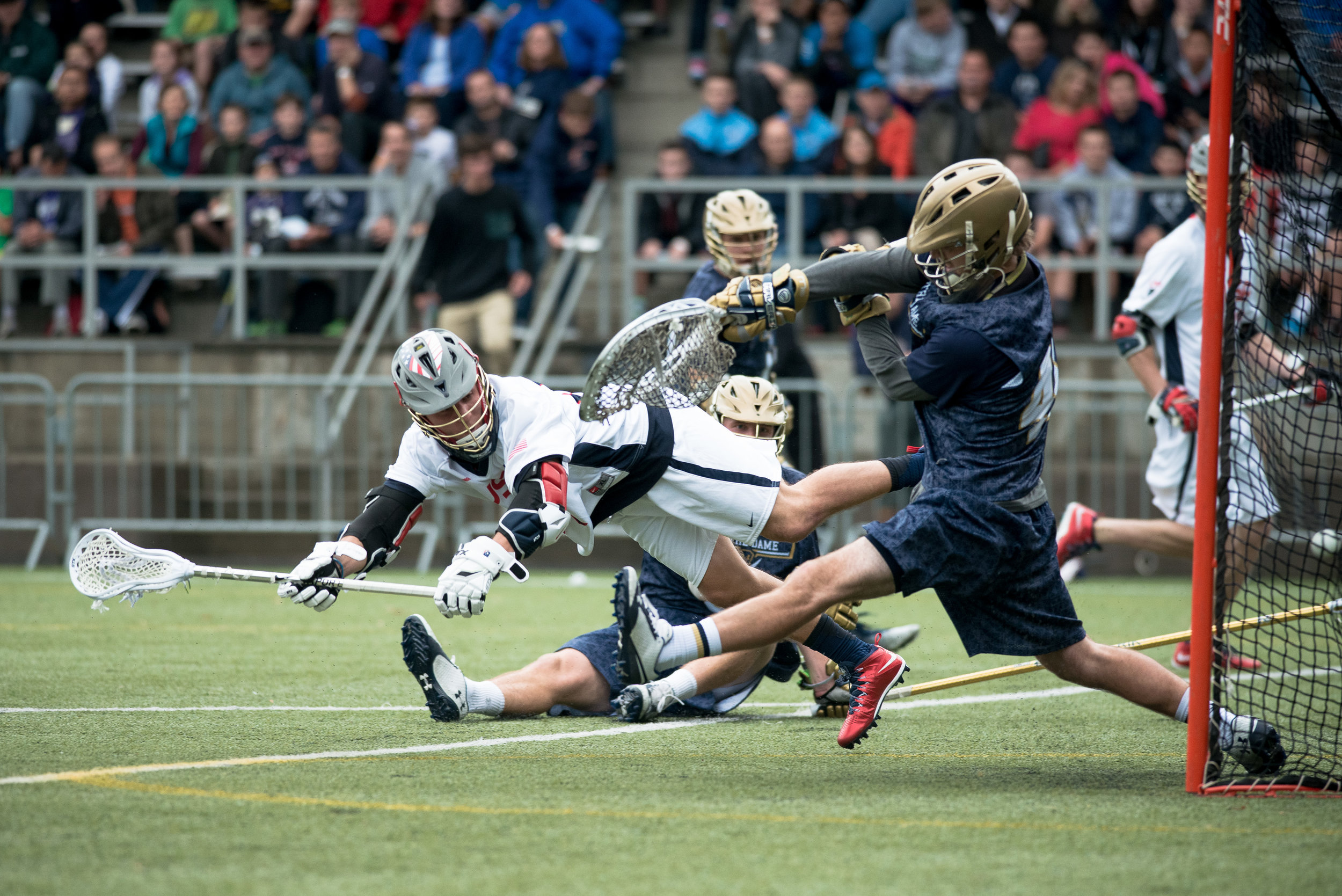
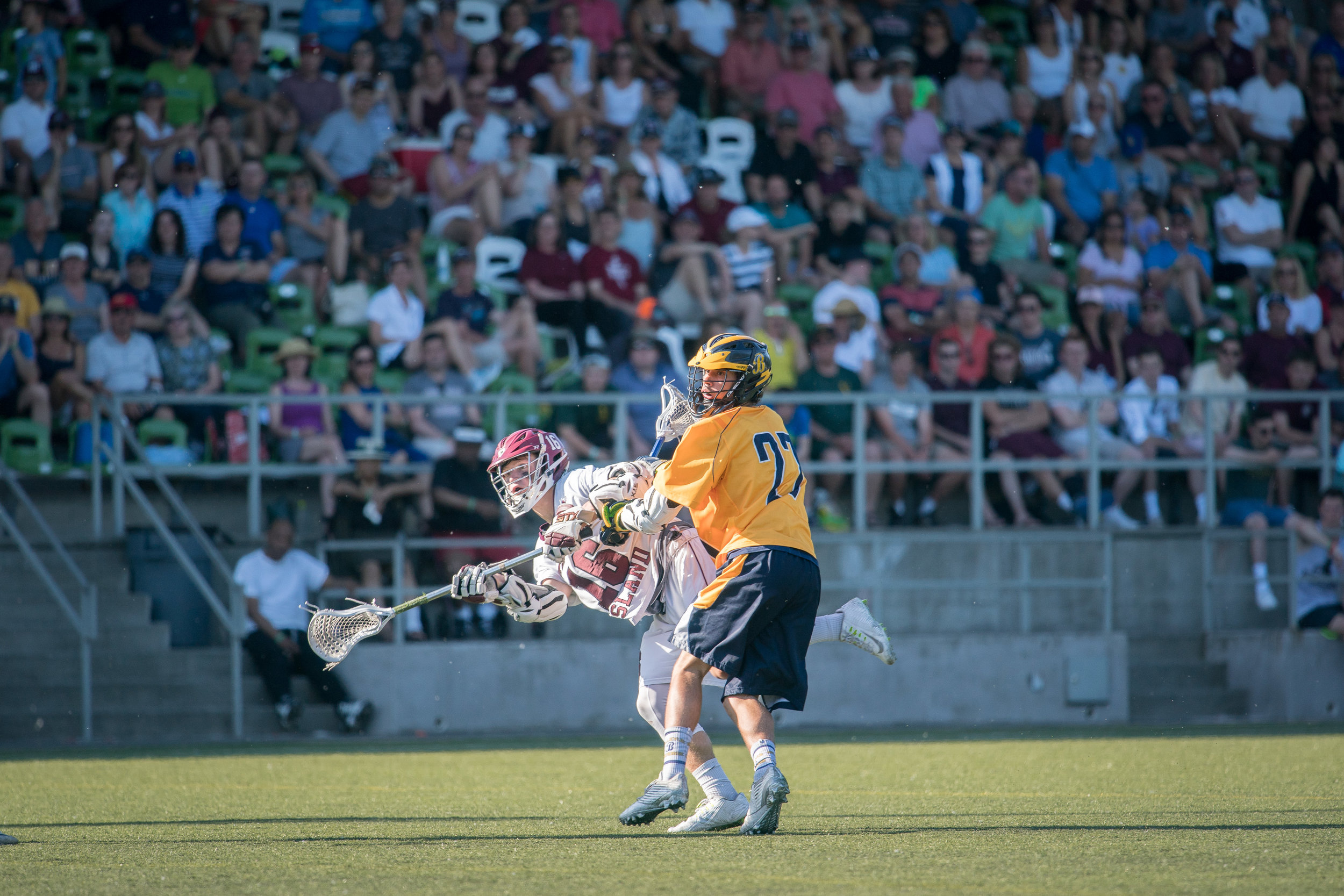
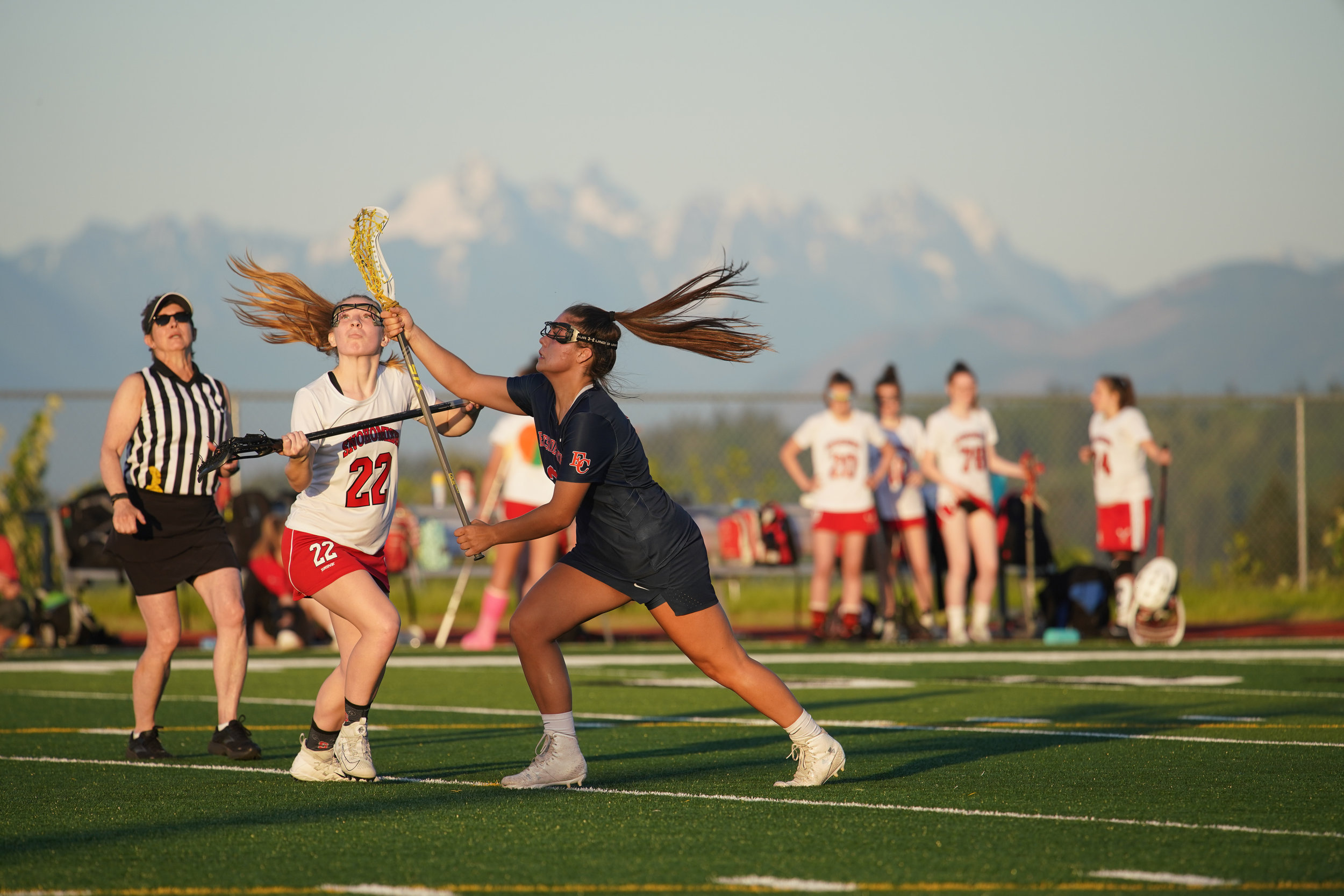

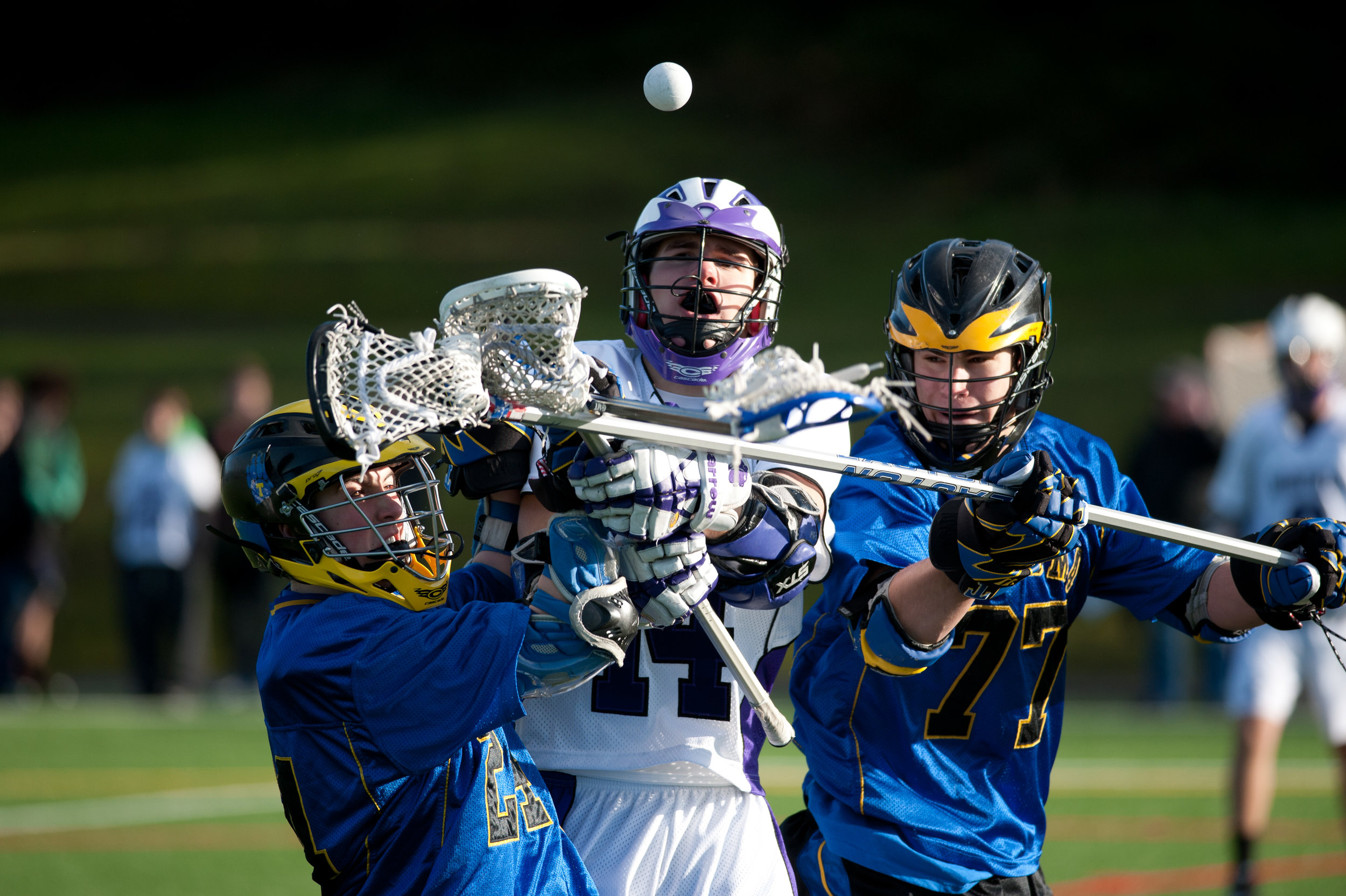
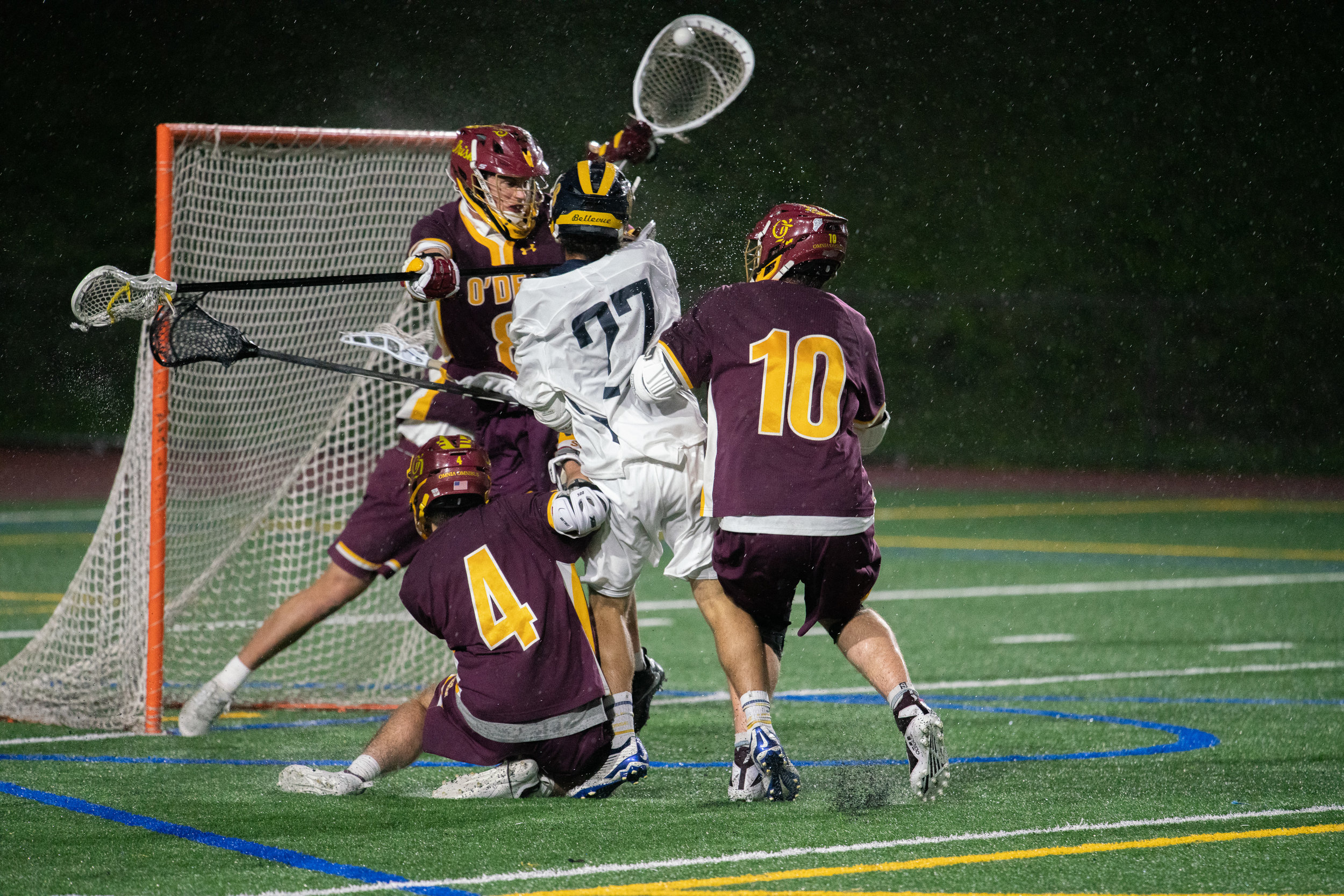
Enter the Sony 400mm f/2.8
Sony 400mm f/2.8. Also a plug for the Peak Design “Everyday” 20L pack. Ignore honey buckets in the background. Photo courtesy Rick Edelman.
Then Sony came out with their first telephoto prime and I just had to try it out to see if the buzz was true about the lightning fast focus and relatively lightweight build, given its size. The thing has the power of a telescope, but is significantly lighter than other 400mm lenses. Indeed the Sony 400 weighs just slightly more than the Nikon and Canon 300mm equivalents.
So I was a bit concerned when I rented the new gargantuan Sony 400mm f/2.8 GM to shoot the high school lacrosse championships here in Washington State. I brought along a monopod - which I rarely use - fully expecting the I’d have to resort to it for the bulk of my photography. Did I say the lens is huge?
Ok, not that heavy! Plug for my favorite second body/lens, A6400 with 135 f/1.8.
Minutes into the girls championship game, old habits took over and I found myself running up and down the field, panting. There simply was not enough time to follow the action, get down low, set it on the monopod, and take a shot. Instead, I found myself running back and forth with the monopod dangling uselessly from the extension bar. I finally just removed it and stored it back into my pack.
Result? I definitely lost a fair amount of lateral flexibility in terms of moving up and down the field, but was still favorably impressed with just how much I was able to cart the lens up and down the field. It’s not nearly as heavy as it looks, and the extremely fast focus enabled me to get shots off that much quicker.
Low angle, check. Eyes and face, check. Background, check. A7R3, ISO 1000, 1/100 sec, 7:50pm.
Getting the Goal
It’s not easy getting ‘ahead of the action’ to get behind the goal, unless you are a team parent camping out behind the opposing team’s goal or you have two photographers covering the same game. In my case, I just had to plod up and down the field, hoping that the refs would call a movement foul.
Hmm, did she score?
OK I’ll use that monopod after all…
As the game progressed and as I tired out, and as darkness fell, it began to make sense to use the monopod after all. With girls lacrosse there is a lot of stopping and starting, which doesn’t really mean you get any rest. It does mean that if you have the energy, you may have time to sprint down the field and position yourself for the next moments of action. In general, girls lacrosse is actually more tiring to shoot than boys because there is more end to end field action. Probably more even than soccer.
Boys and their helmets
The following weekend was the boys state championships. Boys lacrosse presents a slightly different set of challenges. First, it’s more fluid: the action rarely stops. Second, you have the helmets to contend with, which makes it so much more difficult to capture faces and expressions. It’s also extremely difficult to actually get a photo of a player shooting the ball because the best players don’t telegraph their moves; the ball is in the net before the goalie is even aware. So anticipation is fairly important. And positioning. Which means lots of running. And if you are ‘just catching up’ then you’ll likely end up with a photo that shows the back of the attackman as he is shooting, and possibly the goalie’s face. Which isn’t a bad thing. But it’s not the whole story.
Background, nope. Eyes, nope. Hey the goalie’s are closed. Ok. but it’s still a decent shot. And yeah, Mahoney scored.
Eyes, check. Background, check (reduce the shadows to enhance).
Get the background
Even if the photo itself is just normal action, sometimes the background can make the photo.
Better check your mascara, particularly when it’s raining. Which it has a tendency to do up here in the Pacific Northwest.
Missing the action, catching the action.
In this case, there was a cluster of players from both sides and I knew I would not be able to even locate the shooter out from the crowd. My positioning just would not work. So instead, I focused on the goalie. Result?
A7R3 with Sony 400mm at 1/1000 sec, f/3.2 and ISO 250
Shoot Low
In the end I found that adapting my style of shooting to the Sony 400mm f/2.8 was not difficult at all. I was able to shoot low-to-high while following the action and only used the monopod sparingly. I’m used to not having the flexibility of a zoom, which I willingly give up in return for better optics and depth of field. With the 400, I did find that sometimes I was just too close in to catch everyone’s heads and toes. But I shot anyhow, and was happy with the results which I hope can give you the observer a better feeling for what it is like to be out there on the field.
2019 Washington State Girls Lacrosse Championships Gallery
2019 Washington State Boys Lacrosse Championship Galleries (4A, 3A, 1A)
Yup. I’ll shoot your team too. Just give me a holler.
Final Verdict
The Sony 400mm f/2.8 truly is an amazing lens - and my camera is not even the best suited for its speed (try an A9 with it, or the new A7R4). And hey, it’s good for other photography than just action sports. Now I just need to sell my car to pay for one.
All photography copyright 2018 and 2019 by Michael Jardine for SoundLacrosse. All photos taken with Sony A7R3 and FE 400mm f/2.8 except for those in the ‘small and light’ slideshow which were taken with the Nikon 300 f/4.


